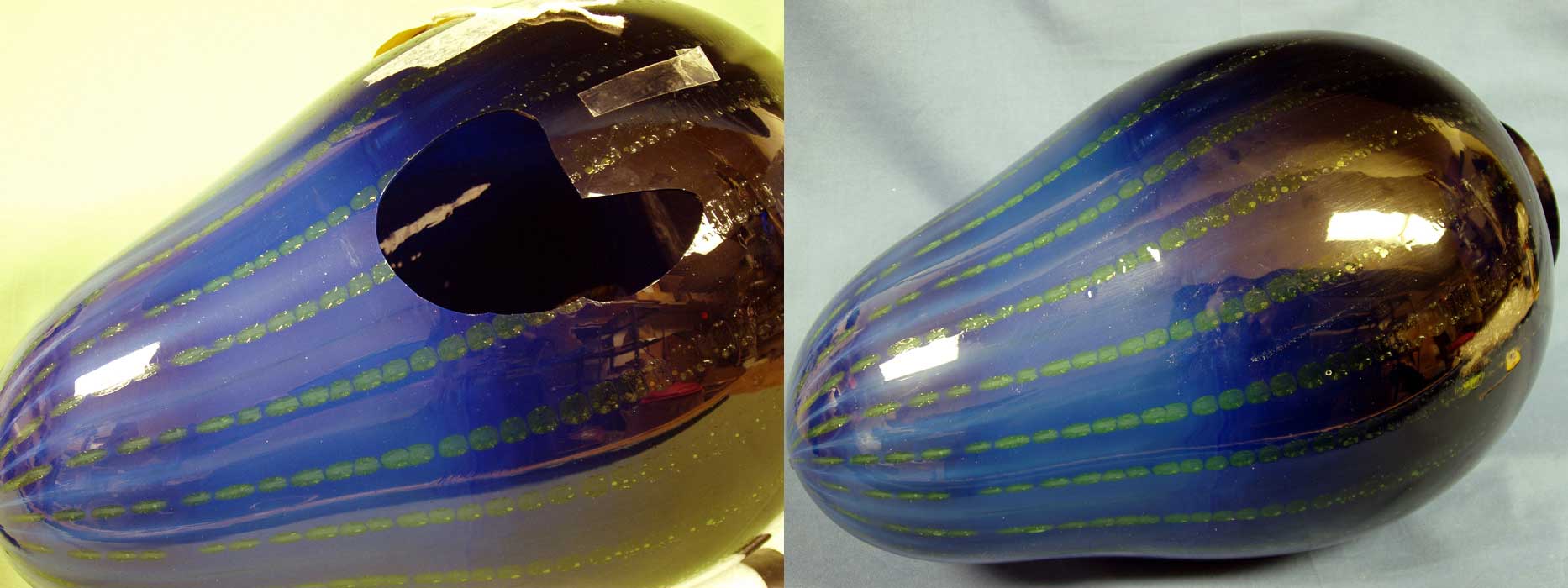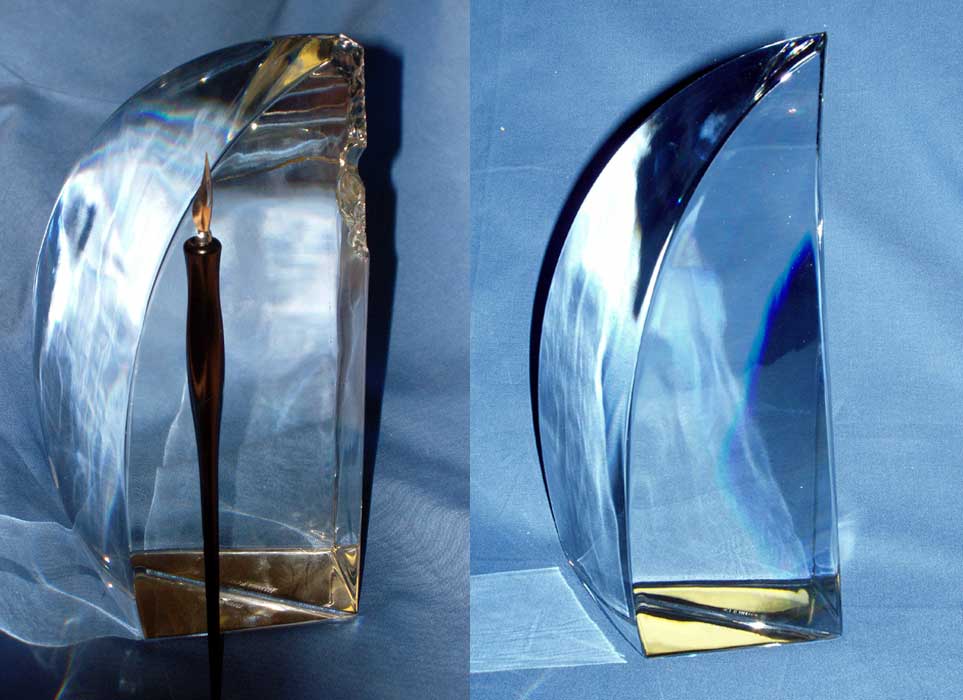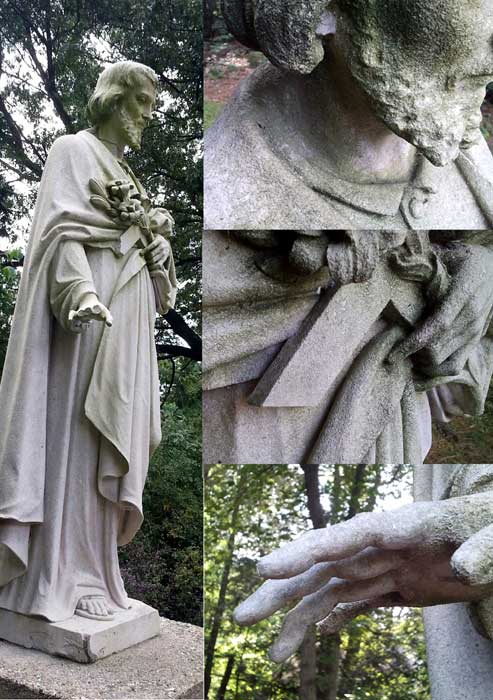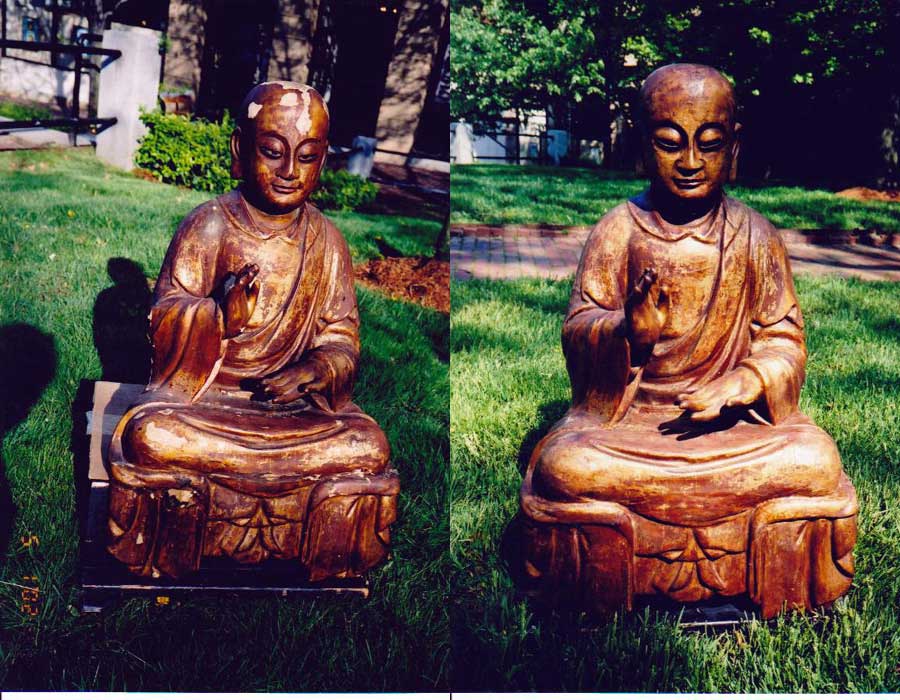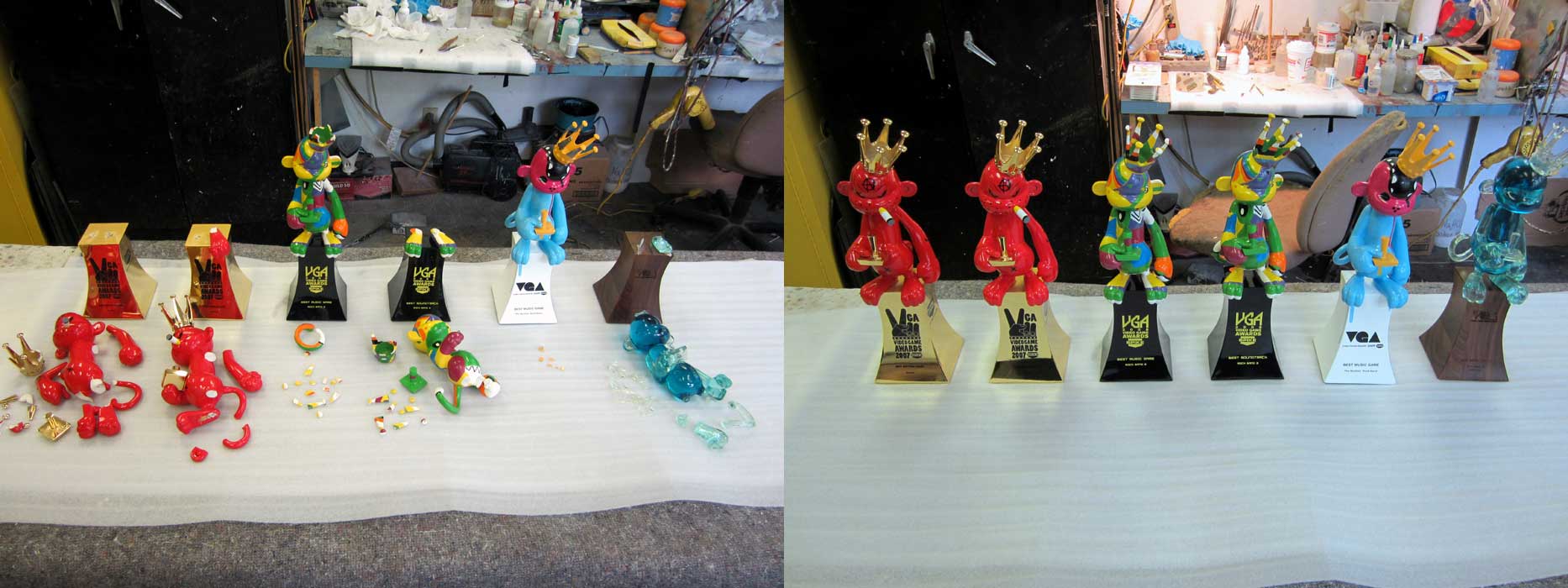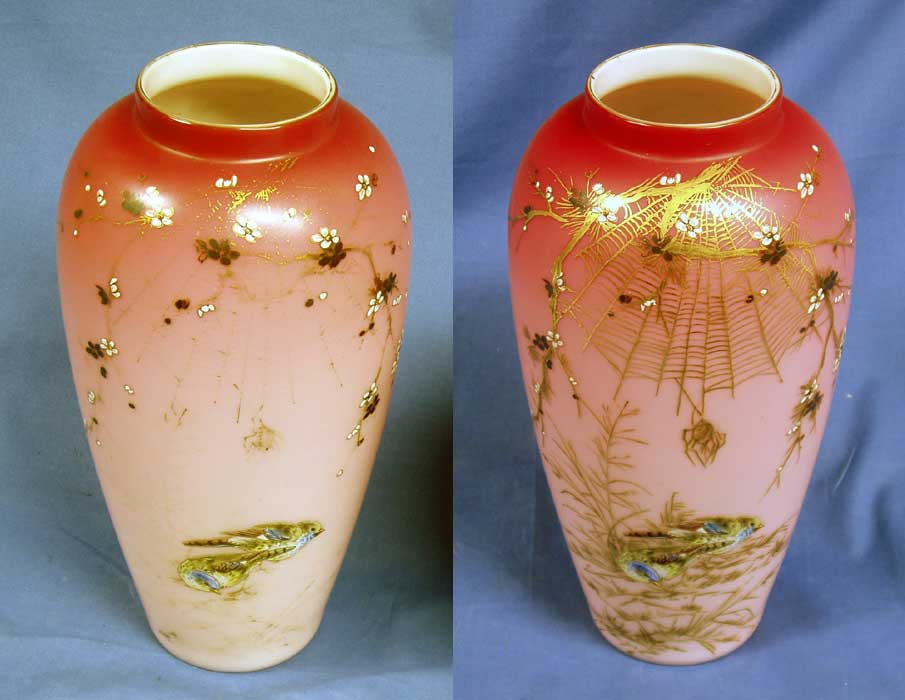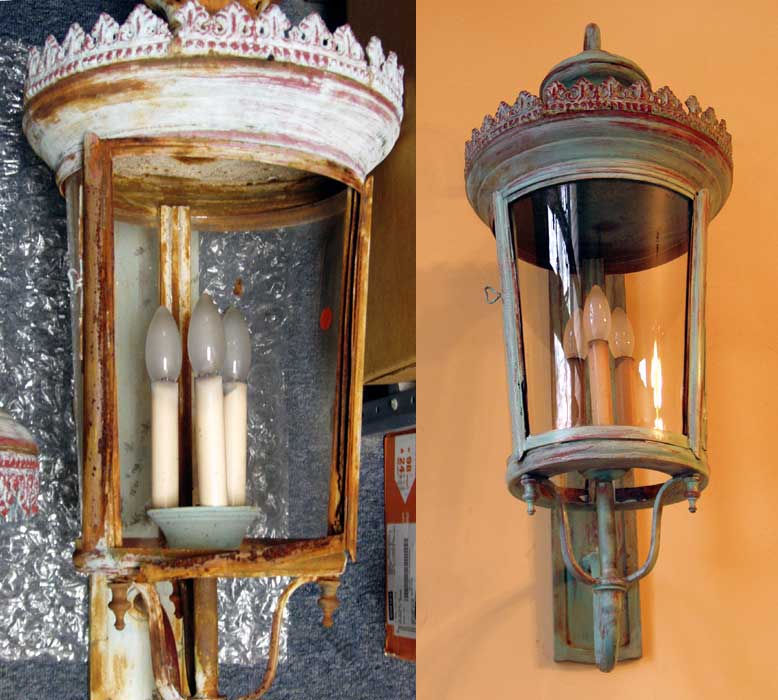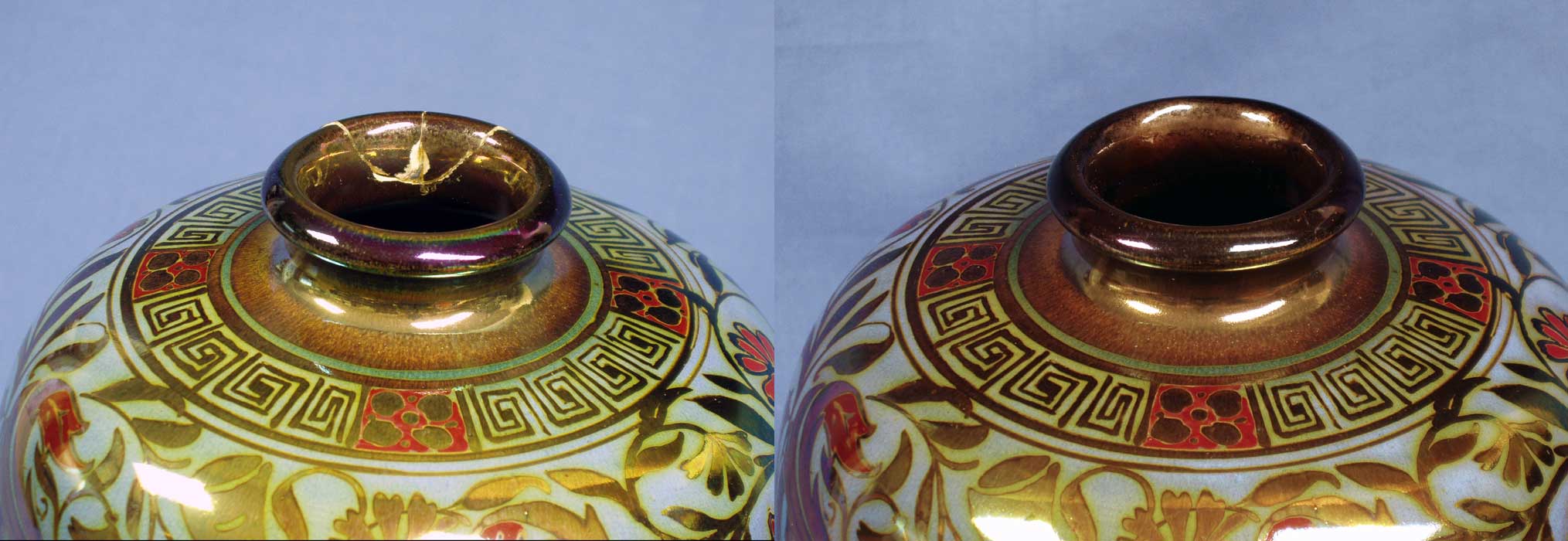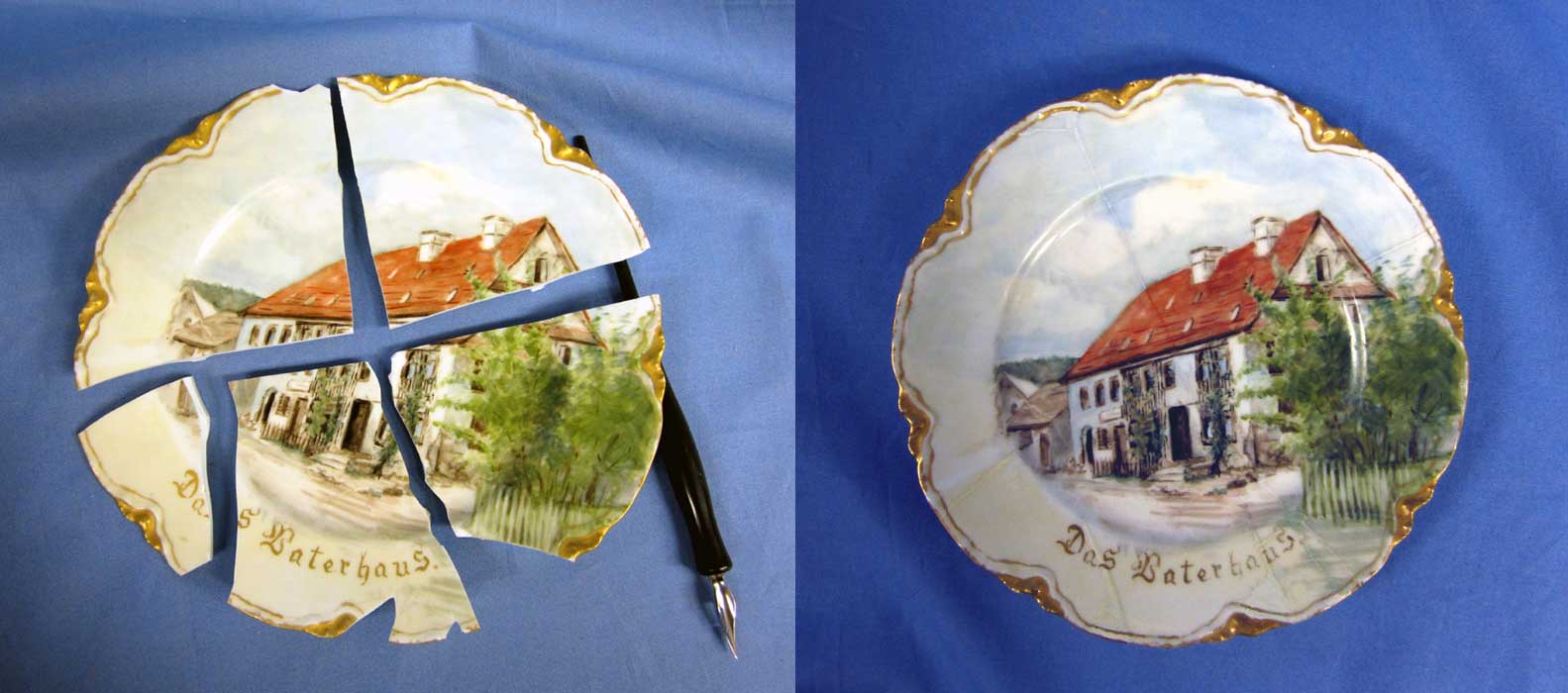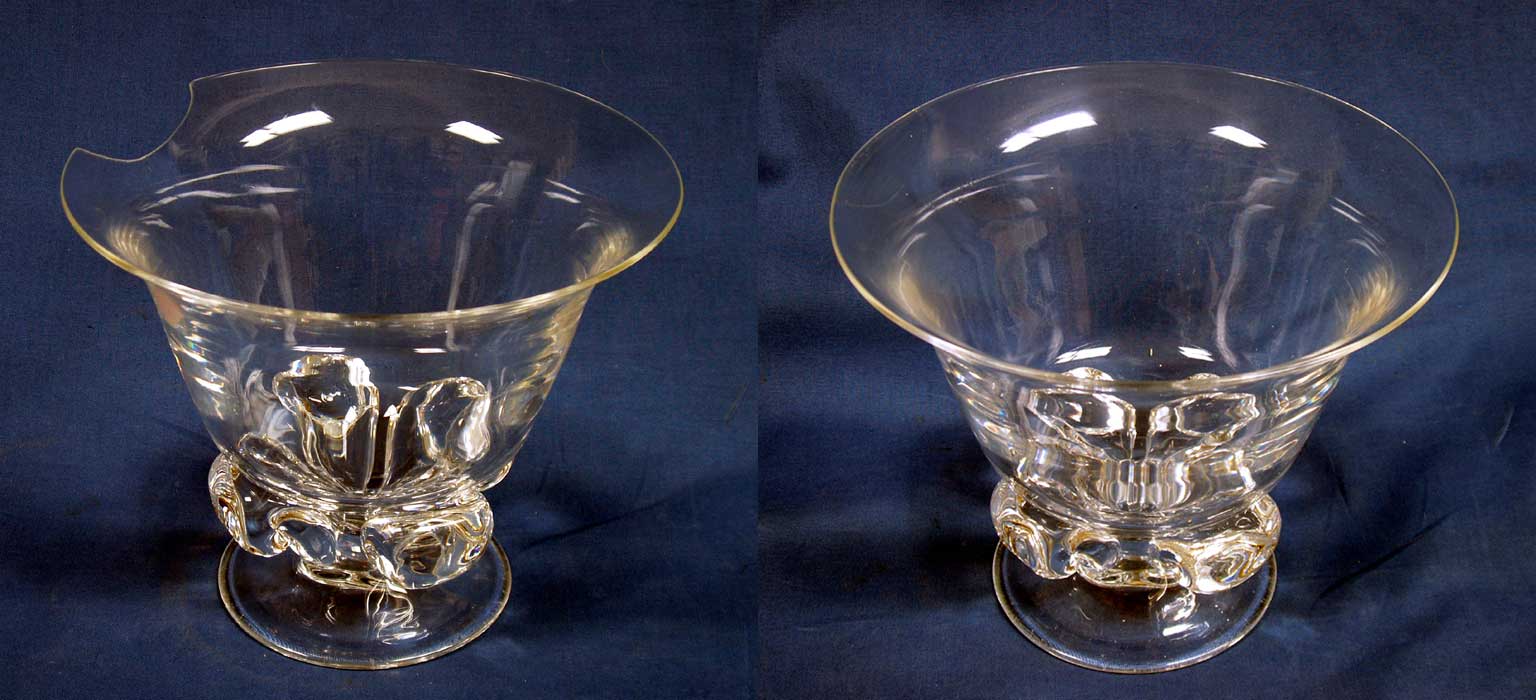
As Steuben becomes rarer with every year since the workshops have closed down, it becomes more and more worthwhile to save their pieces from oblivion. This elegant Steuben bowl was missing a 3” by 1” curved section from its rim, and would have been completely useless if not restored. We made a silicone rubber mold from a good section of the rim, and cast the missing piece with optical epoxy. While not an exact refractive match to the original lead ...


